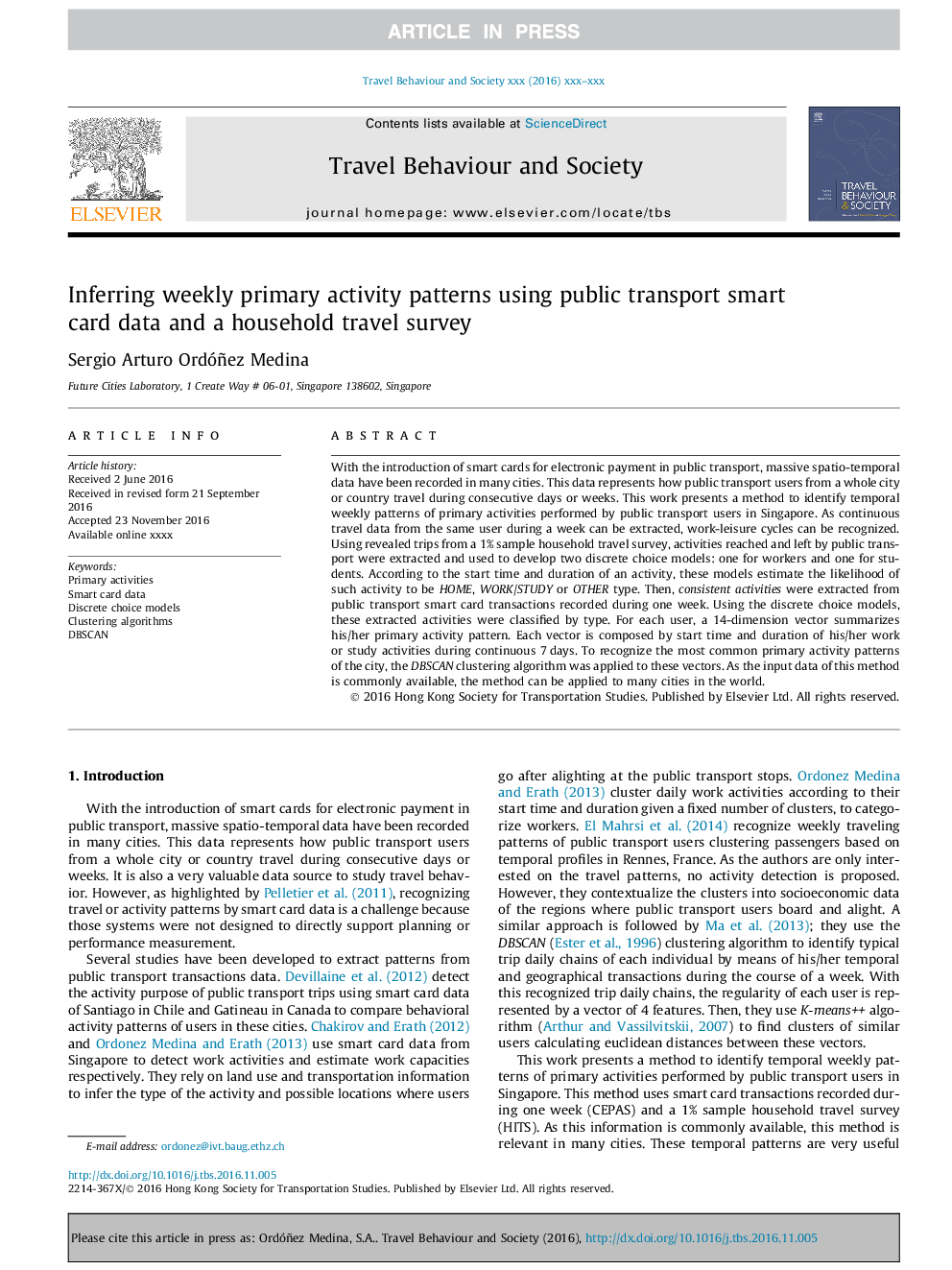| Article ID | Journal | Published Year | Pages | File Type |
|---|---|---|---|---|
| 6576275 | Travel Behaviour and Society | 2018 | 9 Pages |
Abstract
With the introduction of smart cards for electronic payment in public transport, massive spatio-temporal data have been recorded in many cities. This data represents how public transport users from a whole city or country travel during consecutive days or weeks. This work presents a method to identify temporal weekly patterns of primary activities performed by public transport users in Singapore. As continuous travel data from the same user during a week can be extracted, work-leisure cycles can be recognized. Using revealed trips from a 1% sample household travel survey, activities reached and left by public transport were extracted and used to develop two discrete choice models: one for workers and one for students. According to the start time and duration of an activity, these models estimate the likelihood of such activity to be HOME, WORK/STUDY or OTHER type. Then, consistent activities were extracted from public transport smart card transactions recorded during one week. Using the discrete choice models, these extracted activities were classified by type. For each user, a 14-dimension vector summarizes his/her primary activity pattern. Each vector is composed by start time and duration of his/her work or study activities during continuous 7Â days. To recognize the most common primary activity patterns of the city, the DBSCAN clustering algorithm was applied to these vectors. As the input data of this method is commonly available, the method can be applied to many cities in the world.
Related Topics
Life Sciences
Environmental Science
Management, Monitoring, Policy and Law
Authors
Sergio Arturo Ordóñez Medina,
